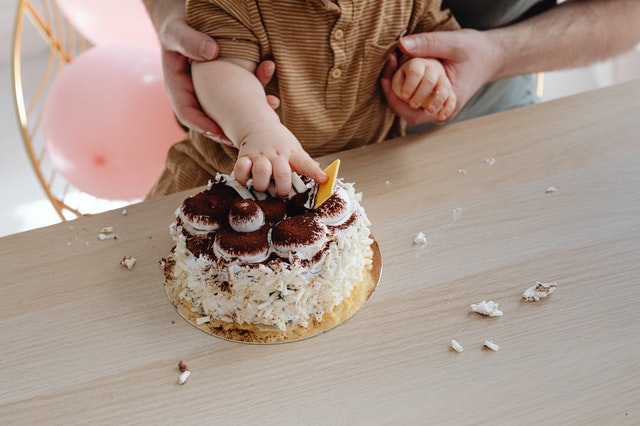A finger injury is a common injury, especially for those who are involved in sports. Finger injuries are typically caused by one of the following: a jammed finger, a broken finger, or a finger sprain. Finger injuries can be quite painful and cause a significant amount of discomfort. A finger injury can be quite problematic for daily activities, including typing and playing sports. Unlike most other sports injuries, finger injuries often do not require surgery to be treated. Instead, a finger injury usually requires the use of a splint or a finger brace to stabilize the injured finger. The most common type of finger injury is a jammed finger, which is often caused by jamming or bending the finger or thumb in an awkward motion. Jammed fingers are often caused by falling on your hand or by another person forcefully pushing your finger. In some cases, a jammed finger can be caused by a sudden stop in your hand or finger motion. For example, if you’re playing basketball and you suddenly come to a stop, you could cause a jammed finger.
When It’s Happens?
A jammed finger happens when a finger gets stuck in a position and can’t move. It can be a very painful injury and your finger will likely swell and turn red. A jammed finger is an injury that requires immediate medical attention, but if you can’t get to the doctor right away, there are some things you can do to help fix the injury so you can get back to normal activities as soon as possible.
How To Fix A Jammed Finger:
There are many different methods for repairing a jammed finger. You can rest the injured finger to help it heal. You can also apply ice to reduce swelling. You can also try bending the finger to avoid further damage. While these methods may help you repair your finger, not all injuries are treatable at home. Some injuries require the care of a doctor. Read the following for tips on how to fix a sprained finger.
If your finger is jammed, the first step is to keep it still. Doing so helps to stabilize it and ease the pain. Next, you need to gently pull the finger out. Straightening the finger will help realign the tissues in a way that is safe and effective. Using a piece of paper, you can try to straighten it. Keeping it in place while you straighten the finger can help to prevent further damage to the fingers.
If the finger is still too swollen to be able to straighten, you can apply ice to the affected area. Ice will prevent tissue damage and reduce swelling. If the pain is too severe, you can elevate the finger. You may also want to elevate it off the floor to prevent further swelling. Using ice will also minimize the pain caused by the jammed finger. If your injury is severe, your doctor may recommend a surgical procedure.
Physical therapy exercises can be used to help you recover from a jammed finger. You may need to consult with a chiropractor or osteopath to avoid further injury to the joint. Practicing stretches with your jammed finger will not be effective in the long run, as it can favor the injured hand, leading to more complications in the future. Specialists can help you ensure proper range of motion, circulation, and movement of the injured finger.
Using ice to treat a jammed finger is a simple and effective method for treating a jammed finger. It will prevent any further damage to the tissue and will help your finger heal more quickly. In addition to applying ice, you should also elevate your hand to reduce swelling and pain. A physical therapist will help you find the right position for your jammed finger and ensure that it heals properly.
Initially, it is important to rest and apply ice to the finger to reduce swelling. Then, ice will also help reduce the pain and the swelling of the joint. Then, you can move the finger with minimal discomfort. Once it is completely straight, you can continue the healing process by gradually increasing its range of motion. This method can be used for both the treatment of a jammed finger and the prevention of further damage.
Immobilizing a jammed finger is an effective self-care technique. After the swelling has decreased, try to rest the finger. It can be difficult to bend the finger if it is in a fixed position, but ice will help reduce swelling and reduce the pain. A buddy tape can also help you avoid further damage to the finger. You can also try elevating your hand to reduce pain. Then, you can continue using the han
Photo by Karolina Grabowska from PexelsIf you have a jammed finger, it is important to rest it while it is healing. It is important to avoid putting pressure on the finger for a few hours until the swelling goes down. Alternatively, you can use ice to reduce the swelling. By keeping the finger elevated, it will be easier to relieve the pain and reduce the swelling. Once the jammed nail has healed, you should continue with the healing process.
When a jammed finger is still in a fixed position, you can try to pull it out with your other hand. Aim to lift it slowly. This will help you avoid stiffness and pain. Once it has healed, you can perform physical therapy exercises to restore your finger’s range of motion. If you are unable to do this, you can call a doctor or physical therapist. They will advise you on the best way to treat your jammed finger.
Having a jammed finger is one of the most painful experiences a person can have. There are several ways to treat this injury, including physical therapy and rest. You should also avoid sports to prevent further damage to your finger. You should try to straighten your finger as soon as possible. However, it’s important to follow any treatment plan given by a medical professional. If you ignore the advice, you may end up with long-term problems.
The best way to treat a jammed finger is to allow the injured finger to heal on its own. If it’s a dislocation or fracture, the pain can be quite severe and may last for several months. Your fingers may be larger than usual, so you should seek medical help as soon as possible. During this time, you should use ice and rest to relieve the pain. If your injury is severe, you should consult a physician for further treatment.
If the jammed finger is caused by a fracture or dislocation, you should seek medical attention as soon as possible. In some cases, it can heal on its own, but you should always see a doctor or go to the emergency room if your finger is severely injured. It’s important to get proper medical attention immediately, as the injury can lead to a broken bone or a fractured tendon.
If you want to treat a jammed finger on your own, you can try the following exercises. The first thing to do is to keep your finger elevated and iced. Next, you should try to bend it passively or with help from another hand. The aim of stretching is to strengthen the finger. A balloon or soft ball can be used as a tool to stretch the injured finger. Make sure you use a soft object that doesn’t cause much resistance.
If you can’t bend your finger, you should hold it firmly with the other hand. This helps stabilize the finger and ease the initial pain. Then, you should try to straighten the jammed-finger by gently pulling it out. This can help realign the tissues of the finger without damaging them. Taking these steps will help you to fix a jammed finger. It can be a painful experience, but they should heal on their own.
If your finger is jammed, you should hold it firmly. This will help you to control the pain and straighten the finger. After doing this, you should slowly bend it with the other hand. This will strengthen the finger by stretching it. Then, you can also use a soft ball or balloon to straighten the affected joint. The soft ball or balloon should not have a lot of resistance. But it should be soft enough to allow the injured joint to heal.
After a jammed finger has been injured, it is important to remember that it may not require medical attention. It will probably heal on its own after a few weeks with the correct treatment. But you should still be careful not to move your finger too much until you have the swelling reduced. As the pain level decreases, it will be easier for you to move the finger. Once the finger has recovered, you should apply ice and apply heat. This will help reduce the swelling and the discomfort.
While it is important to rest your finger, you should also use ice or bandages to relieve the pain. You can also use the splint to protect your finger. But if the injury is severe, a doctor’s help is necessary. It may be necessary to have surgery. A doctor can help you decide whether to use a splint or a bandage. While ice are common ways to treat a jammed finger, some injuries require medical attention.
After a jammed finger has been injured, it is important to take measures to reduce the pain and restore normal function. For example, you may apply ice to the jammed finger. After applying the ice, you should bend your finger to reduce the swelling. As soon as you can, you should also apply a splint to the injured finger to prevent further damage. This will prevent the finger from slipping or coming off.
If you have jammed your finger and are in pain, using some ice on your finger for 20 minutes at a time can help a great deal. So put an ice cube in a plastic bag and wrap it in a towel. Then put the ice on your finger for 20 minutes. If the pain is still there, continue doing this until the pain goes away.


